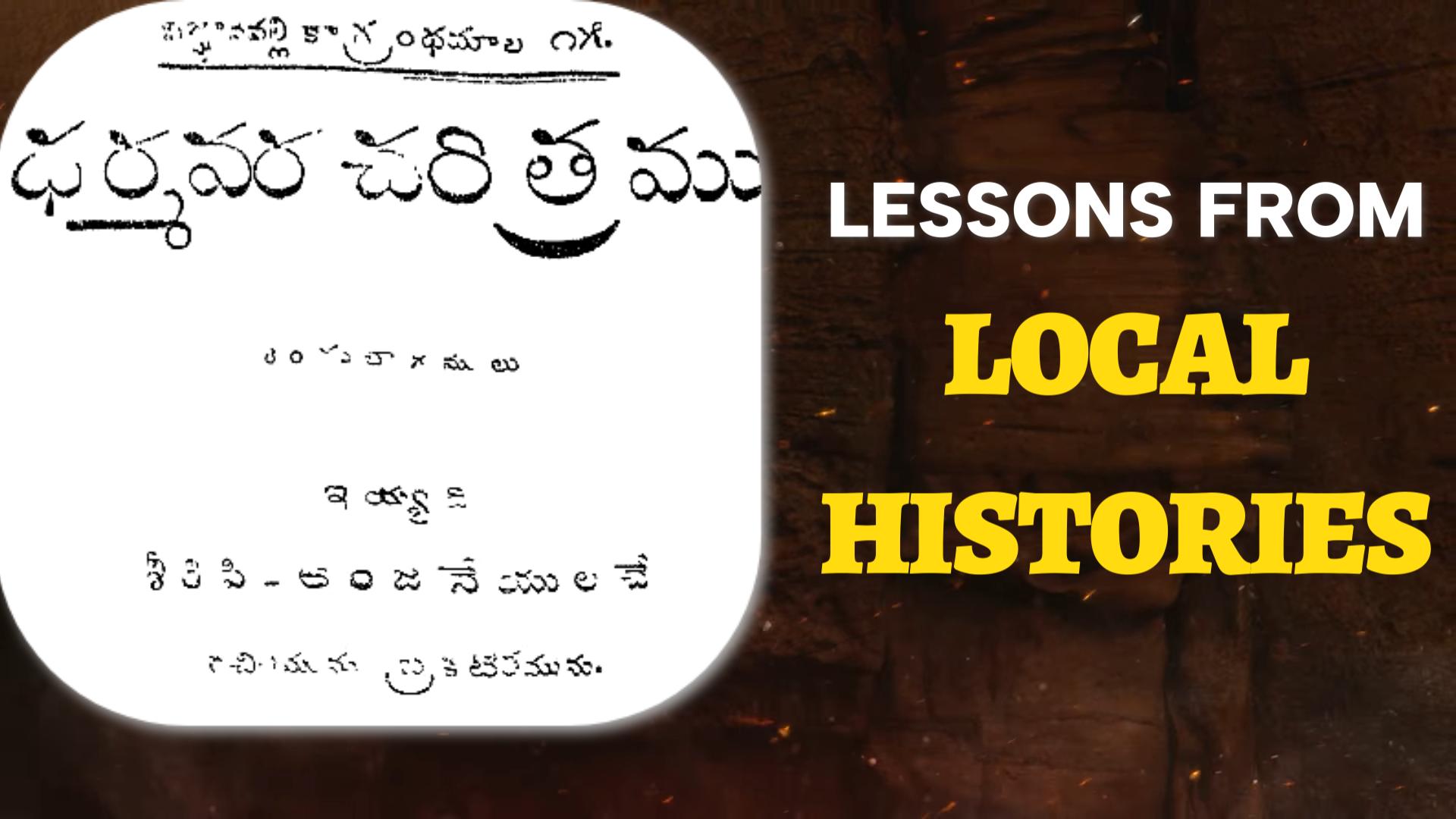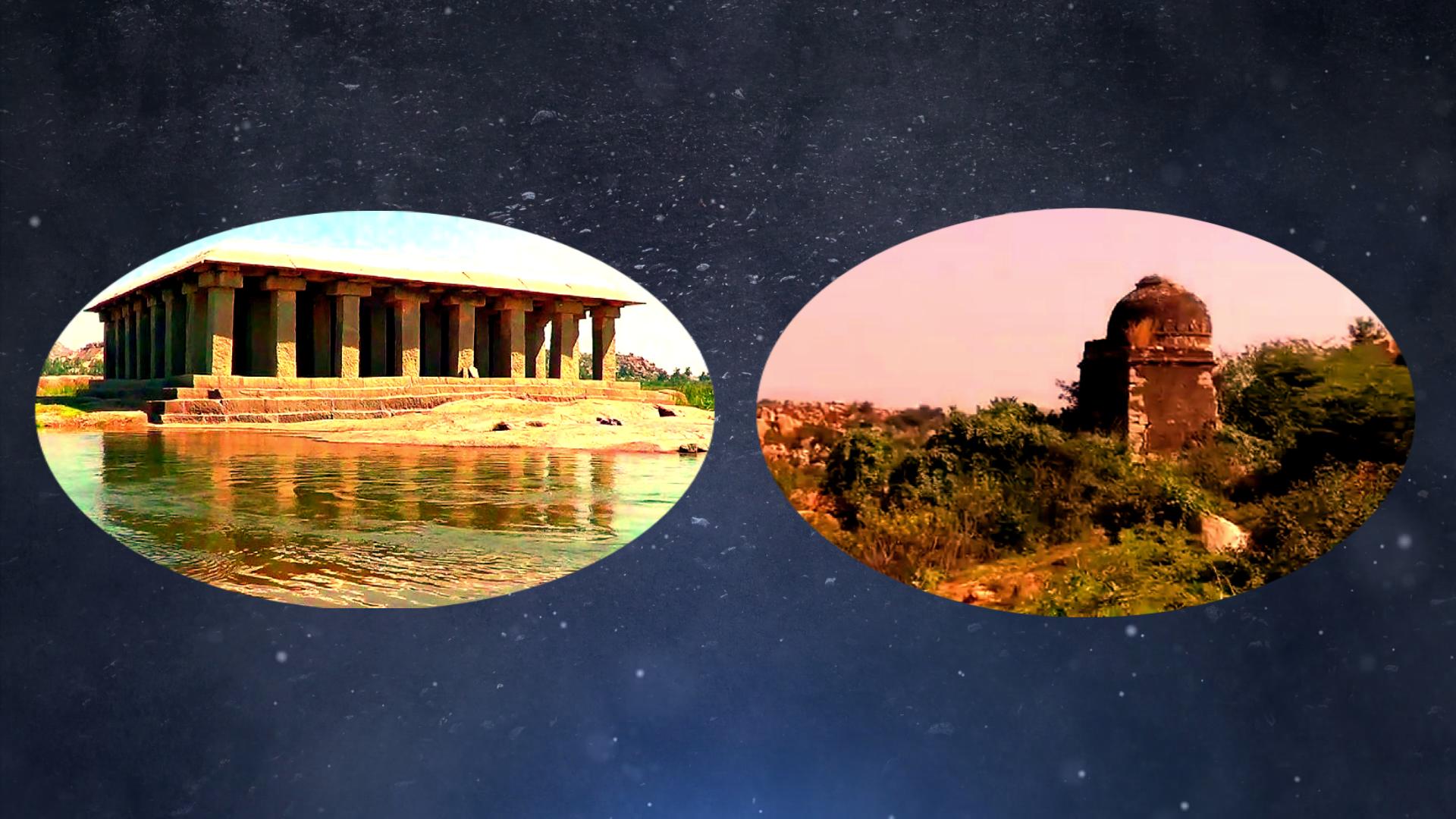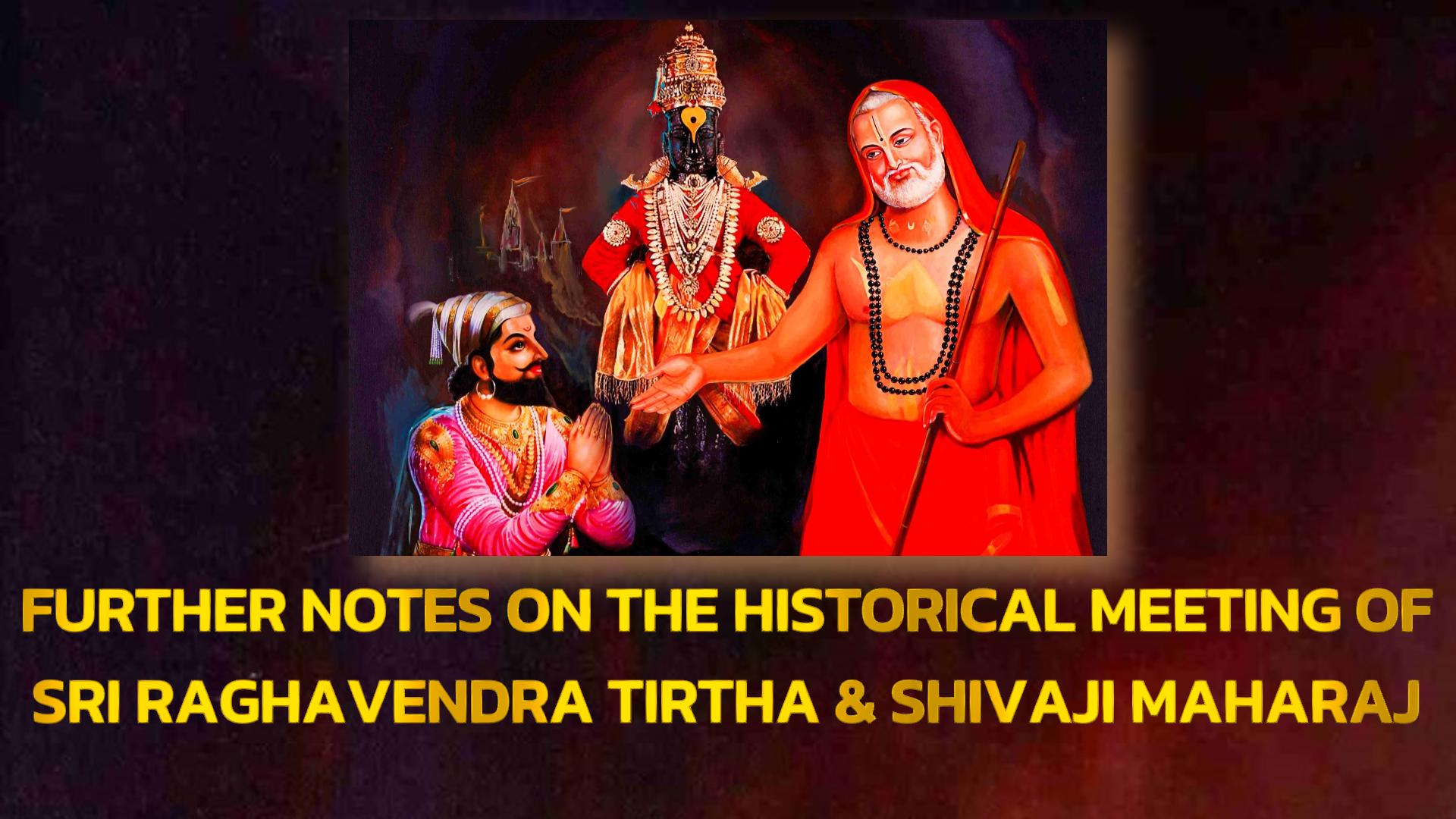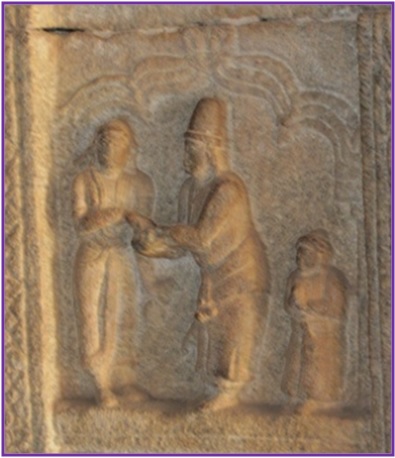Sri Vijayindra Tirtha is
the bulwark of Dvaita Vedanta from post-Vyasatirtha period.
This write-up
is a humble contribution about a great yati who foresaw the difficult
times for Vijayanagara Empire & forewarned Ramaraya to take
measures.

Vijayindra
was born in c.1514 as ‘Vitthala.’ Got initiated into sanyAsa by
Vyasatirtha as ‘Vishnutirtha.’ But subsequently passed on to Surendra
Tirtha as his successor & got renamed as ‘Vijayindra Tirtha.’
was born in c.1514 as ‘Vitthala.’ Got initiated into sanyAsa by
Vyasatirtha as ‘Vishnutirtha.’ But subsequently passed on to Surendra
Tirtha as his successor & got renamed as ‘Vijayindra Tirtha.’
Aliya
Ramaraya, the de-facto ruler of Vijayanagara, was upholding the
Vijayanagara tradition of honouring the spiritual leaders of Vedic &
non-Vedic sects. Likewise, he respected mAdhva yati-s of his times.
Ramaraya, the de-facto ruler of Vijayanagara, was upholding the
Vijayanagara tradition of honouring the spiritual leaders of Vedic &
non-Vedic sects. Likewise, he respected mAdhva yati-s of his times.
Sri
Surendra Tirtha, guru of Vijayindra, has been attested by couple of
copper inscriptions bearing Ramaraya’s name. This inscription from
c.1553 talks about certain donations made by Ramaraya to Surendra
Tirtha. Ramaya made these donations at Vijaya Vitthala temple, Hampi.
Surendra Tirtha, guru of Vijayindra, has been attested by couple of
copper inscriptions bearing Ramaraya’s name. This inscription from
c.1553 talks about certain donations made by Ramaraya to Surendra
Tirtha. Ramaya made these donations at Vijaya Vitthala temple, Hampi.


As
regard to the influence of Vyasatirtha, the Ashrama guru of Vijayindra,
there are dozens of inscriptions, plates, scriptural &
archaeological evidences to gloss over & measure his impact on
Vijayanagara’s royal houses particularly Saluva & Tuluva dynasties.
As an illustrious successor of both Vyasatirtha & Surendra Tirtha,
Vijayindra too has inscriptions issued by the kings & nobles of his
times. Arivimangalam plates of Tanjavur Sevvappa Nayaka [1533-80]
testify the same. This donation is dated 20/06/1575.
regard to the influence of Vyasatirtha, the Ashrama guru of Vijayindra,
there are dozens of inscriptions, plates, scriptural &
archaeological evidences to gloss over & measure his impact on
Vijayanagara’s royal houses particularly Saluva & Tuluva dynasties.
As an illustrious successor of both Vyasatirtha & Surendra Tirtha,
Vijayindra too has inscriptions issued by the kings & nobles of his
times. Arivimangalam plates of Tanjavur Sevvappa Nayaka [1533-80]
testify the same. This donation is dated 20/06/1575.



Both
Vyasatirtha & Surendra Tirtha renounced the mortal world in the
same year i.e. c.1539. And Vadiraja & Vijayindra are the two yatis
who saw the destruction of Hampi after Battle of Talikota &
continued their Dharmik activities with Aravidu & Nayaka kings.
Vyasatirtha & Surendra Tirtha renounced the mortal world in the
same year i.e. c.1539. And Vadiraja & Vijayindra are the two yatis
who saw the destruction of Hampi after Battle of Talikota &
continued their Dharmik activities with Aravidu & Nayaka kings.
Raghavendra
Vijaya, biography of Sri Raghavendra Tirtha, mentions that Vijayindra
was honoured by Aliya Ramaraya with ‘ratnAbhishEka’ at Hampi. However,
there is no recorded evidence to access the timeline of this event.
(NOTE This biography was written when Gururaya was alive.).
Vijaya, biography of Sri Raghavendra Tirtha, mentions that Vijayindra
was honoured by Aliya Ramaraya with ‘ratnAbhishEka’ at Hampi. However,
there is no recorded evidence to access the timeline of this event.
(NOTE This biography was written when Gururaya was alive.).

But
the close proximity that his Gurus (Vyasatirtha & Surendra) had
with the emperors & nobles of Vijayanagara evinced by inscriptions
& other contemporary sources could help in considering
‘ratnAbhishEka’ by Ramaraya to Vijayindra as a believable incident.
the close proximity that his Gurus (Vyasatirtha & Surendra) had
with the emperors & nobles of Vijayanagara evinced by inscriptions
& other contemporary sources could help in considering
‘ratnAbhishEka’ by Ramaraya to Vijayindra as a believable incident.
Vijayindra
Vaibhava, a biography written by Madhva Kavi [believed to be a disciple
of Sri Vadiraja], is another source from which the life events of the
saint can be gleaned through. [I don’t have the copy hence relying on
other books having excerpts of it]. There
come a string of intriguing incidents from his life history that few
years before Talikota battle, Vijayindra visits Hampi on hearing the
unhappiness of the nobles regarding Ramaraya’s behaviour & his new
found love with a Muslim captain.
Vaibhava, a biography written by Madhva Kavi [believed to be a disciple
of Sri Vadiraja], is another source from which the life events of the
saint can be gleaned through. [I don’t have the copy hence relying on
other books having excerpts of it]. There
come a string of intriguing incidents from his life history that few
years before Talikota battle, Vijayindra visits Hampi on hearing the
unhappiness of the nobles regarding Ramaraya’s behaviour & his new
found love with a Muslim captain.
As
per the hagiography, one Ranaduhalla Khan, a captain of a cavalry
(composed of Muslim mercenaries) became a close friend of Ramaraya &
was growing in influence with the de-facto ruler. This made the Hindu
nobles bitter. Some of them approached Vijayindra for guidance. After
reaching Hampi, Vijayindra sends for Ramaraya but the raya sends back
the messenger with an assurance he would come. After waiting for couple
of months & not seeing the Raya coming Vijayindra himself reaches
palace to find raya having fun time with Ranaduhalla Khan. Shocked with
the unexpected appearance of the revered yati, Raya asks the Khan to
leave the palace immediately & receives the saint. At this juncture,
Vijayindra forewarns the Raya about the bad omens that he encountered
during his stay at Hampi.
per the hagiography, one Ranaduhalla Khan, a captain of a cavalry
(composed of Muslim mercenaries) became a close friend of Ramaraya &
was growing in influence with the de-facto ruler. This made the Hindu
nobles bitter. Some of them approached Vijayindra for guidance. After
reaching Hampi, Vijayindra sends for Ramaraya but the raya sends back
the messenger with an assurance he would come. After waiting for couple
of months & not seeing the Raya coming Vijayindra himself reaches
palace to find raya having fun time with Ranaduhalla Khan. Shocked with
the unexpected appearance of the revered yati, Raya asks the Khan to
leave the palace immediately & receives the saint. At this juncture,
Vijayindra forewarns the Raya about the bad omens that he encountered
during his stay at Hampi.
Vijayindra
advises Ramaraya to forego his friendship with the mlEchChA-s &
heed to the advises of Hindu nobles. Else, the yati warns raya that
“Your adharma can undo the efforts put in by his predecessors &
nullify the puNya imparted by Dharmik gurus of Vedic pantheon.”
advises Ramaraya to forego his friendship with the mlEchChA-s &
heed to the advises of Hindu nobles. Else, the yati warns raya that
“Your adharma can undo the efforts put in by his predecessors &
nullify the puNya imparted by Dharmik gurus of Vedic pantheon.”
He
also says that the Raya has the responsibility to fructify the puNya
phala imparted by the Dharmik Gurus by not rubbing the shoulders.with
Avaidik forces. Ramaraya begs forgiveness & requests the yati to
stay at Hampi for some more time.Vijayindra refuses the request. Says
that he has decided to move to Kumbhakonam & wish to stay there for
the rest of his life. Ramaraya expresses his regret for insulting the
yati by making him wait for months to meet & assures of following
the advises given. After this final meeting with Ramaraya, Vijayindra
moves out of Hampi & settles down at Kumbhakonam. He enters the
brindAvana in c.1595 after appointing Sudhindra Tirtha as his successor.
also says that the Raya has the responsibility to fructify the puNya
phala imparted by the Dharmik Gurus by not rubbing the shoulders.with
Avaidik forces. Ramaraya begs forgiveness & requests the yati to
stay at Hampi for some more time.Vijayindra refuses the request. Says
that he has decided to move to Kumbhakonam & wish to stay there for
the rest of his life. Ramaraya expresses his regret for insulting the
yati by making him wait for months to meet & assures of following
the advises given. After this final meeting with Ramaraya, Vijayindra
moves out of Hampi & settles down at Kumbhakonam. He enters the
brindAvana in c.1595 after appointing Sudhindra Tirtha as his successor.
In
contrast to Vyasatirtha & Surendra whose inscriptions can be found
at Hampi, the inscriptions & plates of donations made to Vijayindra
are almost from Tamil country only. This peculiarity may support the
above said incident of Vijayindra moving out of Hampi permanently. Similarly,
the narratives of Fr. Heras in his ‘Aravidu Dynasty’ about two Muslim
generals employed with Vijayanagara army & their deception at
Talikota also support the legend wherein Vijayindra warned Ramaraya
against his over indulgence with Muslims. Gazetteer of Gadag district
mentions that Ramaraya has adopted Ali Adil Shah of Bijapur as his son
can also be considered as a pointer towards Ramaraya’s inclination
towards Muslims. His refusal to stop cow slaughter in Hampi is another
irrefutable evidence.
contrast to Vyasatirtha & Surendra whose inscriptions can be found
at Hampi, the inscriptions & plates of donations made to Vijayindra
are almost from Tamil country only. This peculiarity may support the
above said incident of Vijayindra moving out of Hampi permanently. Similarly,
the narratives of Fr. Heras in his ‘Aravidu Dynasty’ about two Muslim
generals employed with Vijayanagara army & their deception at
Talikota also support the legend wherein Vijayindra warned Ramaraya
against his over indulgence with Muslims. Gazetteer of Gadag district
mentions that Ramaraya has adopted Ali Adil Shah of Bijapur as his son
can also be considered as a pointer towards Ramaraya’s inclination
towards Muslims. His refusal to stop cow slaughter in Hampi is another
irrefutable evidence.
There
are good number of references available for Ramaraya’s involvement in
the affairs of Sultanates apart from keeping a close company of Muslims
at home. All these may be considered as sources for validating the
legend narrated above. If the legend of Vijayindra forewarning Ramaraya
about the impending catastrophe (Talikota battle) could be supported by
direct references then it would become the most critical development
that changed the fortunes of greatest Hindu empire of medieval times.
are good number of references available for Ramaraya’s involvement in
the affairs of Sultanates apart from keeping a close company of Muslims
at home. All these may be considered as sources for validating the
legend narrated above. If the legend of Vijayindra forewarning Ramaraya
about the impending catastrophe (Talikota battle) could be supported by
direct references then it would become the most critical development
that changed the fortunes of greatest Hindu empire of medieval times.
My humble obeisance to this mahAn yati who was known for his skill in 64 crafts.
भक्तानां मानसांभॊज भानवॆ कामधॆनवॆ
नमतां कल्पतरुवॆ जयींद्रगुरवॆ नमः
References:
- Ajayya Vijayindraru by Raja S. Gururajacharya
- E.C. Vol 12, Madhva Mathagala Shashanagalu Vol. 1
- History of Dvaita School of Vedanta & Literature by Dr. BNK Sharma
- Lectures & articles of contemporary scholars





